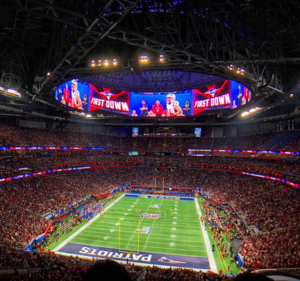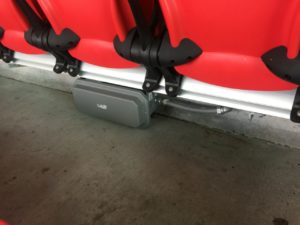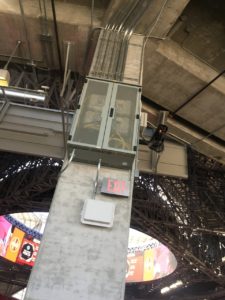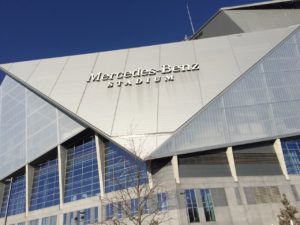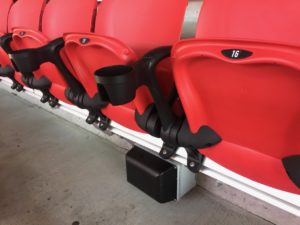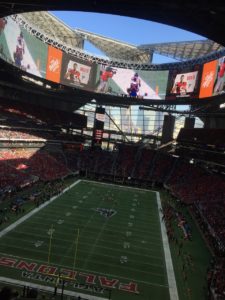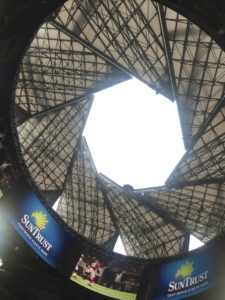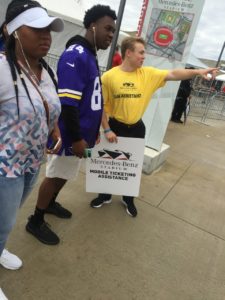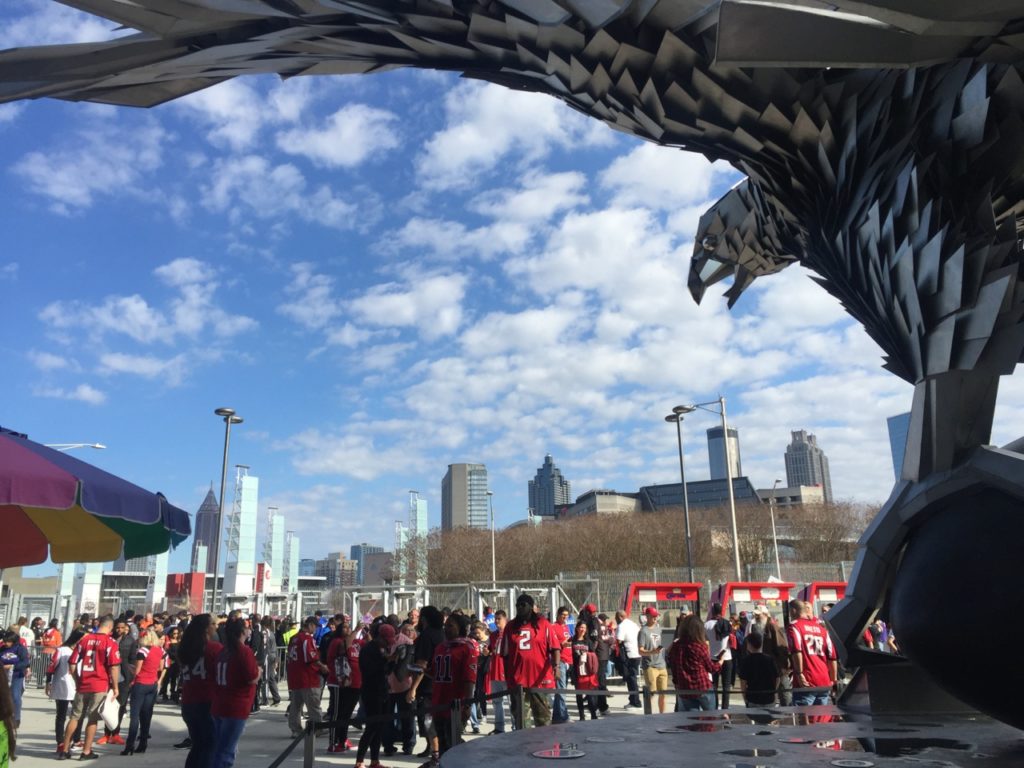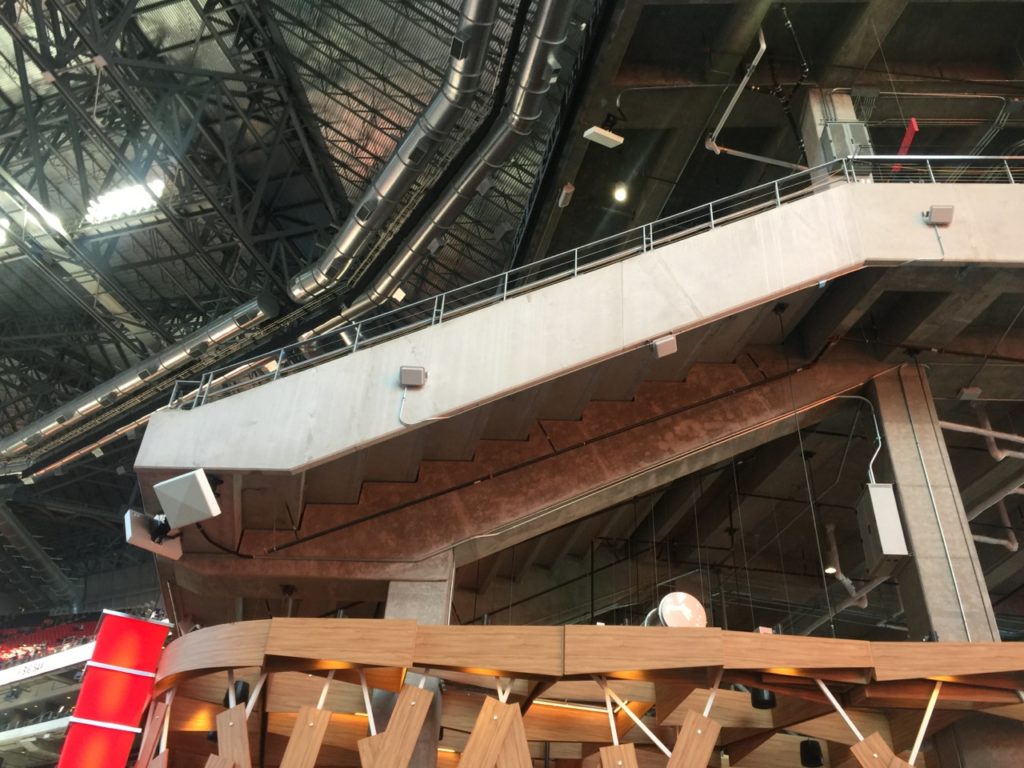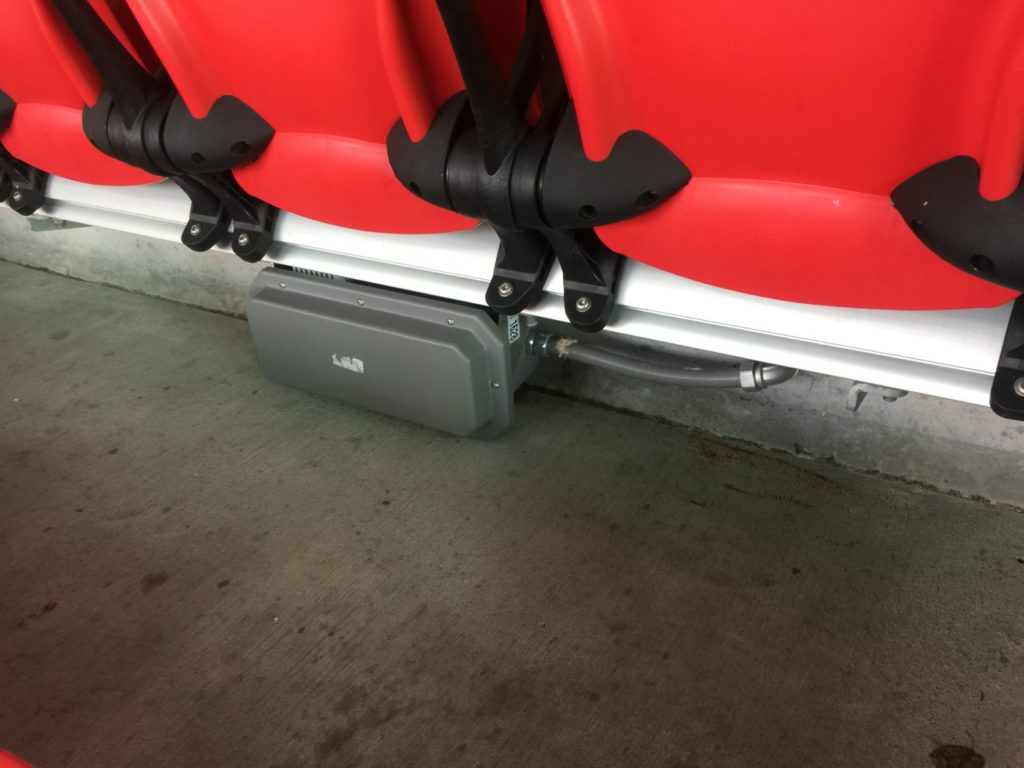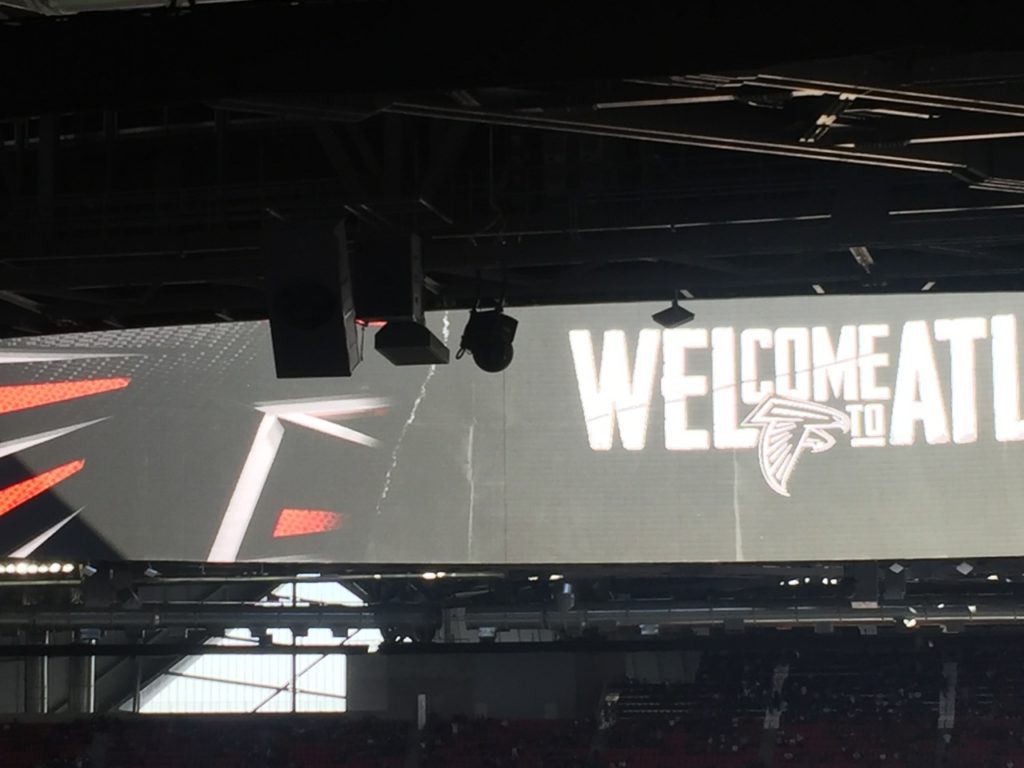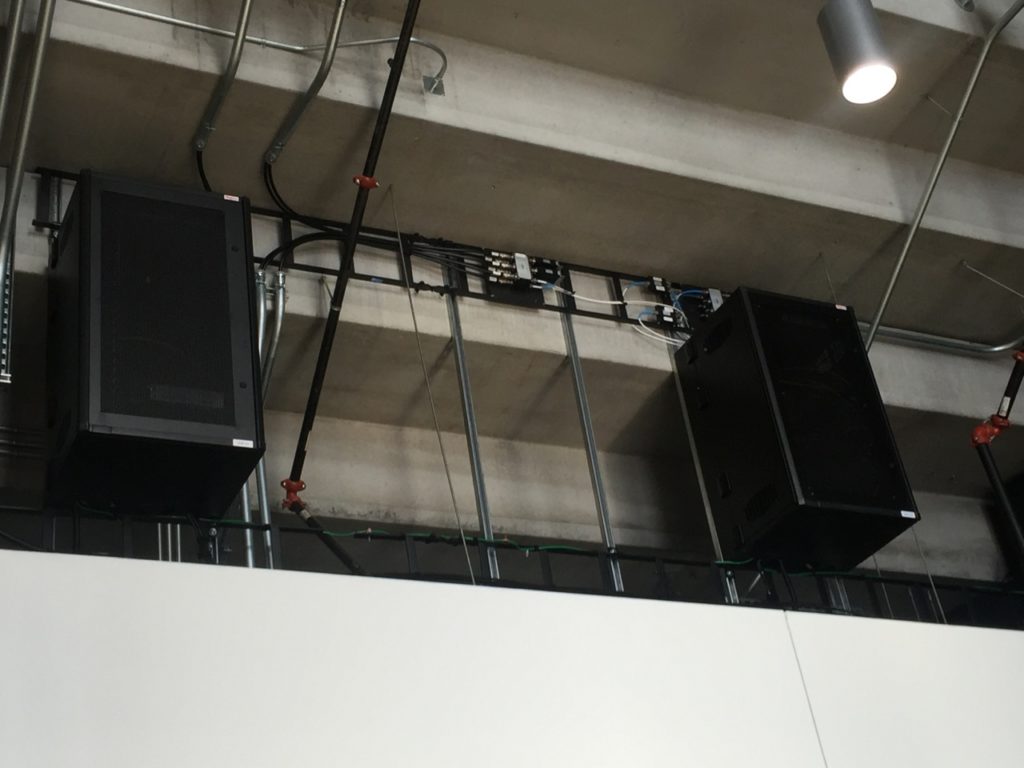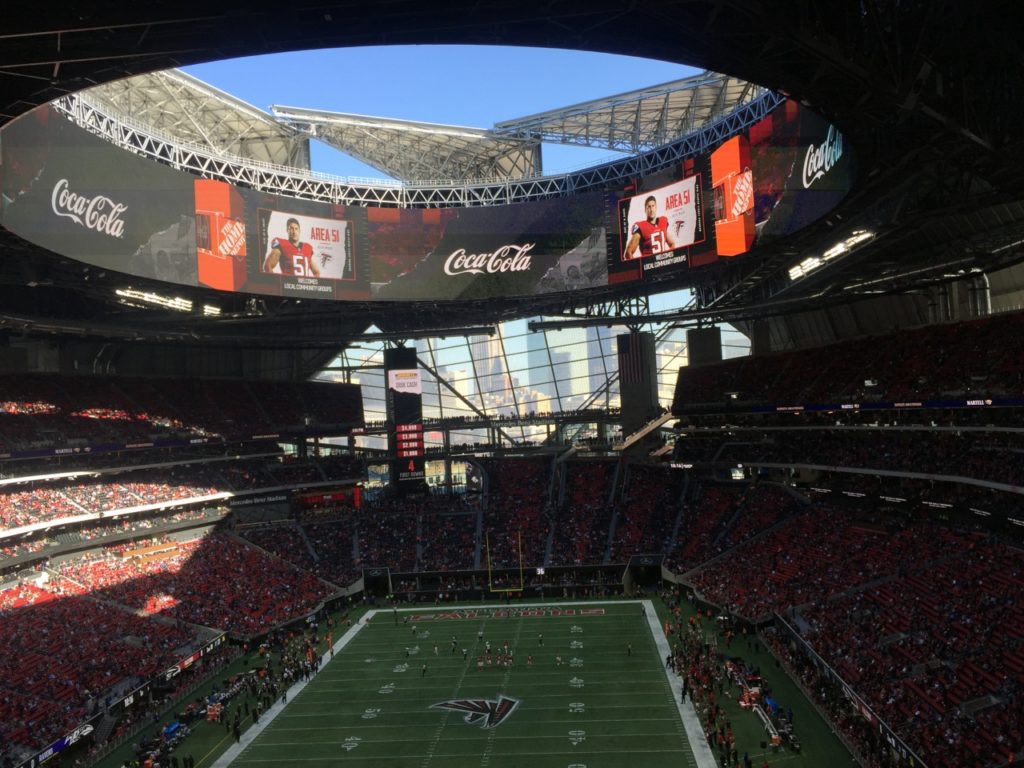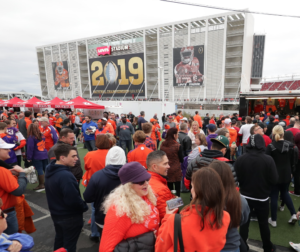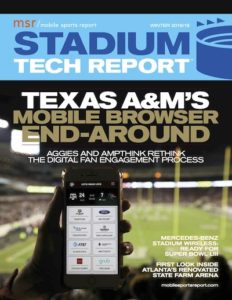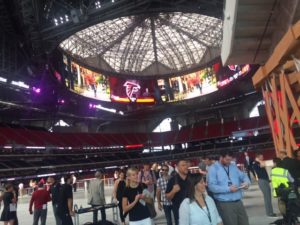According to official statistics provided by Extreme Networks, new high-water marks were set last Sunday in every category of network measurement, including an amazing 48,845 unique users on the network, a take rate of 69 percent out of the 70,081 who were in attendance to watch the New England Patriots beat the Los Angeles Rams 13-3. The average Wi-Fi data use per connected fan also set a new record, with the per-fan mark of 492.3 megabytes per user eclipsing last year’s mark of 407.4.
With some 1,800 APs installed inside Mercedes-Benz Stadium — with most of the bowl seating APs located underneath the seats — the Wi-Fi gear from Aruba, a Hewlett Packard Enterprise company, in a design from AmpThink, also saw a peak throughput rate of 13.06 Gbps, seen at halftime. The peak number of concurrent network users, 30,605, also took place during the halftime show, which featured the band Maroon 5 (whose show played to mixed reviews). While Mobile Sports Report deemed the network ready to rock in a December visit, the record-breaking statistics are sure to give pause to any venue in line to host the Super Bowl in the next few years. No pressure, Miami!
Extreme Networks, which provides Wi-Fi analysis in a sponsorship deal with the NFL, had a great list of specific details from the event, which you can also peruse in the fine infographic that the company produces after each Super Bowl. Here are some of the top-line stats:Need proof that people still watch the game? Out of the 24.05 TB total, Extreme said 9.99 TB of the traffic took place before the kickoff, followed by 11.11 TB during the game and halftime, and another 2.95 TB after the game concluded.
On the most-used apps side, Extreme said the most-used social apps were, in order of usage, Facebook, Instagram, Twitter, Snapchat and Bitmoji; on the streaming side, the most-used apps were iTunes, YouTube, Airplay, Spotify and Netflix. The most-used sporting apps by fans at the game were, in order, ESPN, NFL, the Super Bowl LIII Fan Mobile Pass (the official app for the game), CBS Sports (which broadcast the game live) and Bleacher Report.
While Super Bowl Wi-Fi traffic has grown significantly each year since we started reporting the statistics, one reason for the bigger leap this year may have been due to the fact that Verizon Wireless used its sponsorship relationship with the NFL to acquire its own SSID on the Mercedes-Benz Stadium Wi-Fi network.
According to Andrea Caldini, Verizon vice president for networking engineering in the Eastern U.S., Verizon had “autoconnect in play,” which meant that any Verizon customer with Wi-Fi active on their devices would be switched over to Wi-Fi when inside the stadium.“It’s going to be a good offload for us,” said Caldini in a phone interview ahead of the Super Bowl. While Verizon claimed this week to see record cellular traffic as well during Super Bowl Sunday, a spokesperson said Verizon will no longer release such statistics from the game.
As an interesting business note when it comes to sponsorships, the regular Mercedes-Benz Stadium free Wi-Fi SSID, normally ATTWiFi thanks to AT&T’s sponsorship of the network backbone, was switched to #SBWiFi for the big game. Verizon customers were able to connect via a Verizon-specific SSID.
New records list below! Anyone with a missing game that makes the list, send your info in!
THE MSR TOP 18 FOR WI-FI
1. Super Bowl 53, Mercedes-Benz Stadium, Atlanta, Ga., Feb. 3, 2019: Wi-Fi: 24.05 TB
2. Super Bowl 52, U.S. Bank Stadium, Minneapolis, Minn., Feb. 4, 2018: Wi-Fi: 16.31 TB
3. 2018 College Football Playoff Championship, Alabama vs. Georgia, Mercedes-Benz Stadium, Atlanta, Ga., Jan. 8, 2018: Wi-Fi: 12.0 TB*
4. Super Bowl 51, NRG Stadium, Houston, Feb. 5, 2017: Wi-Fi: 11.8 TB
5. Atlanta Falcons vs. Philadelphia Eagles, Lincoln Financial Field, Philadelphia, Pa., Sept. 6, 2018: Wi-Fi: 10.86 TB
6. Super Bowl 50, Levi’s Stadium, Santa Clara, Calif., Feb. 7, 2016: Wi-Fi: 10.1 TB
7. Taylor Swift Reputation Tour, Gillette Stadium, Foxborough, Mass., July 27, 2018: Wi-Fi: 9.76 TB
8. Minnesota Vikings vs. Philadelphia Eagles, NFC Championship Game, Lincoln Financial Field, Philadelphia, Pa., Jan. 21, 2018: Wi-Fi: 8.76 TB
9. Jacksonville Jaguars vs. New England Patriots, AFC Championship Game, Gillette Stadium, Foxborough, Mass., Jan. 21, 2018: Wi-Fi: 8.53 TB
10. Taylor Swift Reputation Tour, Broncos Stadium at Mile High, May 25, 2018: Wi-Fi: 8.1 TB
11. Kansas City Chiefs vs. New England Patriots, Gillette Stadium, Foxborough, Mass., Sept. 7, 2017: Wi-Fi: 8.08 TB
12. SEC Championship Game, Alabama vs. Georgia, Mercedes-Benz Stadium, Atlanta, Ga., Dec. 1, 2018: Wi-Fi: 8.06 TB*
13. Green Bay Packers vs. Dallas Cowboys, Divisional Playoffs, AT&T Stadium, Arlington, Texas, Jan. 15, 2017: Wi-Fi: 7.25 TB
14. Stanford vs. Notre Dame, Notre Dame Stadium, South Bend, Ind., Sept. 29, 2018: 7.19 TB
15. (tie) Southern California vs. Notre Dame, Notre Dame Stadium, South Bend, Ind., Oct. 21, 2017: 7.0 TB
Arkansas State vs. Nebraska, Memorial Stadium, Lincoln, Neb., Sept 2, 2017: Wi-Fi: 7.0 TB
16. WrestleMania 32, AT&T Stadium, Arlington, Texas, April 3, 2016: Wi-Fi: 6.77 TB
17. Wisconsin vs. Nebraska, Memorial Stadium, Lincoln, Neb., Oct. 7, 2017: Wi-Fi: 6.3 TB
18. Super Bowl 49, University of Phoenix Stadium, Glendale, Ariz., Feb. 1, 2015: Wi-Fi: 6.23 TB
* = pending official exact data
